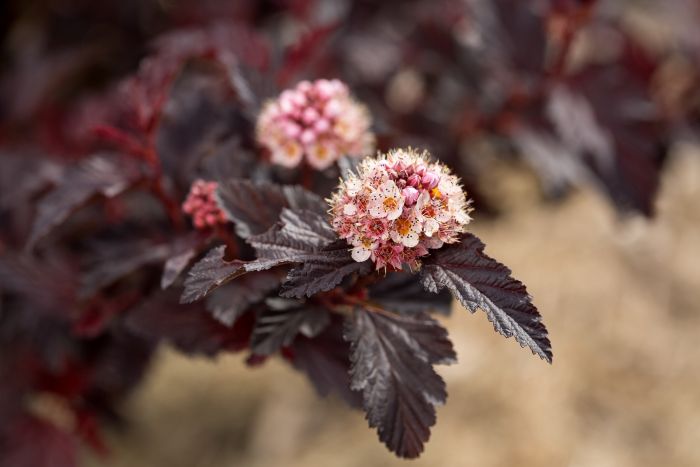Physocarpus, Ninebark 'First Editions® Fireside®'



Out of stock
Coming soon, still growing- Sun Preference
- Full-Sun, Part-Sun
Description
A upright, rounded shrub with stunning foliage; copper new growth matures to deep burgundy-black, then deep purple in fall; pinkish-white flower clusters in spring; interesting peeling papery bark; extremely durable, a superb color accent.
Minnesota's Largest Selection of Shrubs
Elevate your landscaping with Gertens' unmatched variety of shrubs! Selecting the right shrubs for your backyard can enhance its beauty and functionality. Consider factors like sunlight, soil type, and mature size when choosing shrubs. For sunny areas, flowering shrubs like roses or hydrangeas can add color and charm. In shady spots, opt for shrubs like azaleas or hostas. Evergreen shrubs provide year-round interest and privacy, while deciduous shrubs offer seasonal color changes. At Gertens, we offer a wide selection of shrubs to suit every backyard need.
Details
Height: 6 feet
Spread: 5 feet
Sunlight:![]()
![]()
Hardiness Zone: 2b
Other Names: Eastern Ninebark
Brand: First Editions
Description:
A upright, rounded shrub with stunning foliage; copper new growth matures to deep burgundy-black, then deep purple in fall; pinkish-white flower clusters in spring; interesting peeling papery bark; extremely durable, a superb color accent
Ornamental Features
Fireside® Ninebark features showy clusters of white flowers with shell pink overtones at the ends of the branches from late spring to early summer, which emerge from distinctive pink flower buds. It has attractive burgundy foliage with hints of black which emerges coppery-bronze in spring. The serrated lobed leaves are highly ornamental and turn an outstanding deep purple in the fall. The fruit is not ornamentally significant. The peeling tan bark adds an interesting dimension to the landscape.
Landscape Attributes
Fireside® Ninebark is a multi-stemmed deciduous shrub with an upright spreading habit of growth. Its relatively coarse texture can be used to stand it apart from other landscape plants with finer foliage.
This shrub will require occasional maintenance and upkeep, and can be pruned at anytime. It has no significant negative characteristics.
Fireside® Ninebark is recommended for the following landscape applications;
- Accent
- Mass Planting
- Hedges/Screening
- General Garden Use
Planting & Growing
Fireside® Ninebark will grow to be about 6 feet tall at maturity, with a spread of 5 feet. It has a low canopy, and is suitable for planting under power lines. It grows at a medium rate, and under ideal conditions can be expected to live for approximately 30 years.
This shrub does best in full sun to partial shade. It is very adaptable to both dry and moist locations, and should do just fine under average home landscape conditions. It is not particular as to soil type or pH. It is highly tolerant of urban pollution and will even thrive in inner city environments. This is a selection of a native North American species.
| SKU | Container Size |
| S1940.5 | #2 Container (2 Gallon) |
| S1940.6 | #5 Container (5 Gallon) |
* Not all container sizes may be available at this time. See store for details on specific container size availability.
More Information
| Gerten Grown Plants | Gerten Grown Plants |
|---|---|
| Sun Preference | Full-Sun, Part-Sun |
| Mature Height (Range) | 5 - 10 feet |
| USDA Hardiness Zone | 3, 4, 5, 6, 7 |


